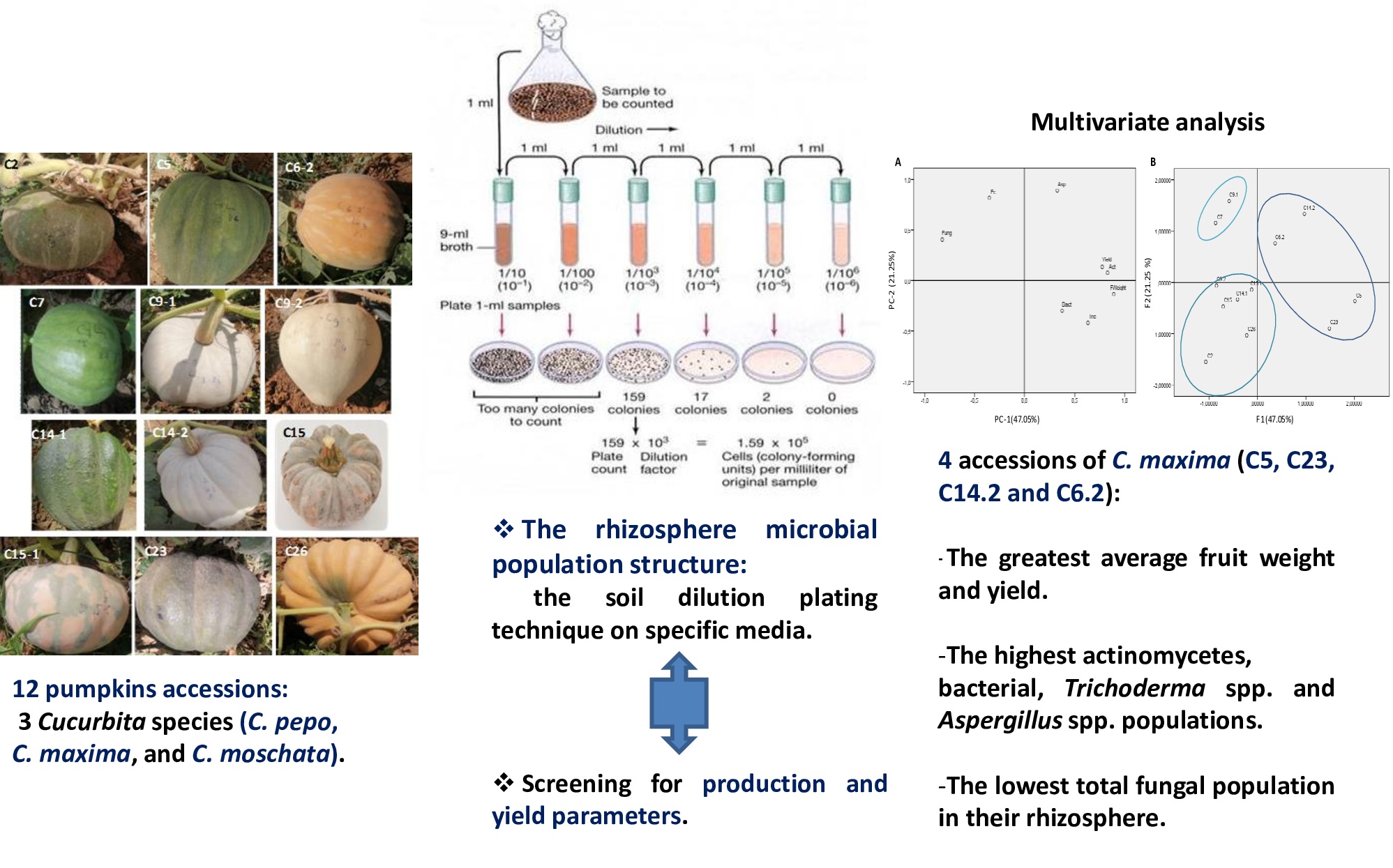
Published 2024-04-04
Keywords
- Breeding,
- Cucurbita spp.,
- fruit yield,
- plant genotype,
- soil microbial community
How to Cite
Copyright (c) 2024 Rania AYDI BEN ABDALLAH, Hela Chikh-Rouhou, Hayfa Jabnoun-Khiareddine, Mejda Daami-Remadi

This work is licensed under a Creative Commons Attribution 4.0 International License.
Abstract
Root-associated microbiota play a key role in plant growth, resilience, and health. In this study, the microbial community structure in the rhizosphere of 12 pumpkins accessions belonging to three Cucurbita species i.e. C. pepo, C. maxima, and C. moschata, was monitored using the soil dilution plating technique on specific media. All accessions tested were also screened for their production and yield parameters. Based on Principal Component Analysis (PCA), 4 accessions of C. maxima (namely C5, C23, C14.2 and C6.2) were characterized by the greatest average fruit weight and yield, the highest actinomycetes, bacterial, Trichoderma spp. and Aspergillus spp. communities, and the lowest total fungal population in their rhizosphere. Positive correlations were noted between fruit fresh weight, culturable bacteria and Trichoderma spp. populations in the rhizopshere of pumpkins accessions. Negative correlations were noted between fruit weight and yield parameters and the total culturable fungal populations. The current study clearly demonstrated that the rhizosphere soil microbial communities have been shaped by Cucurbita species and accessions. Based on the significant links observed between soil microbiota and yield parameters, future pumpkin breeding programs could be focused on the selection of accessions that are quite able to exploit these associated beneficial microbial communities.




